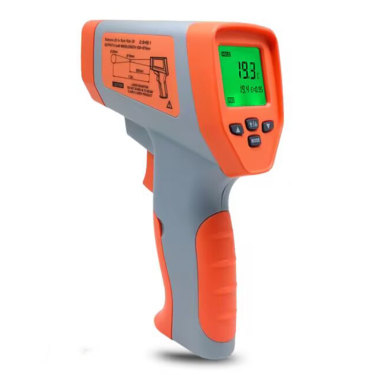
# How to Use a Cooking Thermometer for Perfectly Cooked Meals
## Why a Cooking Thermometer is Essential
A cooking thermometer is one of the most valuable tools in any kitchen. Whether you’re grilling steaks, roasting chicken, or baking bread, this simple device ensures your food reaches the perfect internal temperature for both safety and quality.
Unlike guesswork or visual cues, a thermometer provides precise measurements that take the uncertainty out of cooking. No more cutting into meats to check doneness or serving undercooked dishes that could make your guests sick.
## Types of Cooking Thermometers
Instant-Read Thermometers
These provide quick temperature readings (usually within 2-5 seconds) and are ideal for checking food at the end of cooking. They’re not meant to stay in food while it cooks.
Oven-Safe Thermometers
Keyword: cooking thermometer
Designed to remain in food throughout the cooking process, these thermometers are perfect for roasts and other large cuts of meat.
Probe Thermometers
These feature a probe that stays in the food while cooking, connected to a digital display outside the oven. Many models include timers and temperature alarms.
Pop-Up Thermometers
Commonly found in turkeys and roasts, these disposable indicators pop up when the food reaches a predetermined temperature.
## How to Use a Cooking Thermometer Properly
1. Choose the Right Spot
For meats, insert the thermometer into the thickest part, avoiding bones, fat, or gristle. For thin items like burgers, insert from the side to reach the center.
2. Wait for the Reading to Stabilize
With instant-read thermometers, hold in place for 15-30 seconds. Digital models will beep when ready.
3. Know Your Target Temperatures
- Poultry: 165°F (74°C)
- Ground meats: 160°F (71°C)
- Pork: 145°F (63°C)
- Beef/veal/lamb steaks and roasts: 145°F (63°C) for medium-rare
- Fish: 145°F (63°C)
4. Clean After Each Use
Wash the probe with hot, soapy water after each use to prevent cross-contamination.
## Tips for Thermometer Accuracy
To ensure your thermometer gives accurate readings:
- Test it in boiling water (should read 212°F/100°C at sea level)
- Or test in ice water (should read 32°F/0°C)
- Store properly to prevent damage
- Replace batteries in digital models as needed
## Beyond Meat: Other Uses for Cooking Thermometers
Your cooking thermometer isn’t just for meats. Consider using it for:
- Candy making (specific temperatures create different candy textures)
- Bread baking (internal temperature indicates doneness)
- Deep frying (maintaining proper oil temperature)
- Dairy products like yogurt and cheese
## Investing in Quality
While basic thermometers can be inexpensive, investing in a high-quality digital model with fast response time and precise readings will make your cooking experience much more enjoyable. Look for models with:
- Easy-to-read displays
- Waterproof designs</li